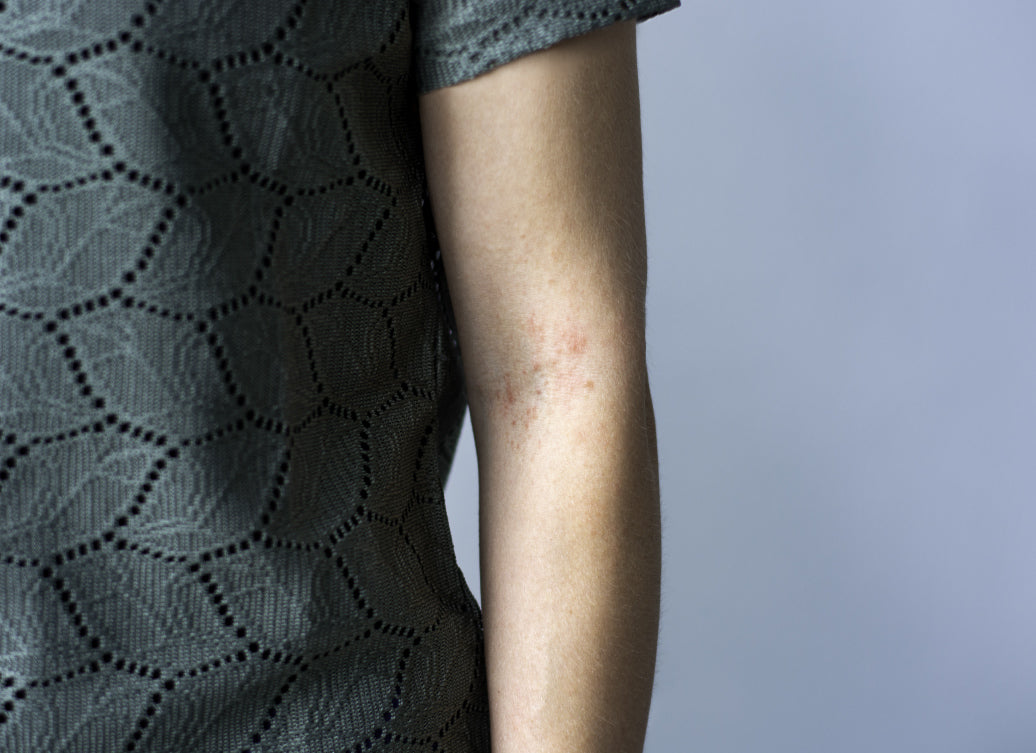Polymorphic light eruption (PMLE) is characterised by an extreme sensitivity to sunlight, which means that sufferers get outbreaks of itchy, bumpy, sometimes even blistered skin on exposure to UV light. It can vary quite a lot in severity, with mild cases just being a temporary discomfort that passes in a few days, but the worst cases involving seriously painful areas of skin throughout the summer.
Polymorphic light eruption occurs most frequently in pale-skinned people, particularly women, who live in regions with colder winters and warm summers, and who don’t get much sun exposure through the winter, but it can affect anyone, anywhere in the world.
Photosensitivity can be triggered by something you’ve eaten or drunk, certain medications, or when you’ve touched something (like poisonous plants or certain perfumes) and then been exposed to sunlight. But it also occurs in several chronic conditions, notably lupus and porphyrias, so it’s reasonable to ask whether PMLE is itself an autoimmune disease.
Lupus and cutaneous porphyria are different conditions to PMLE, and it doesn’t seem that there’s a connection, even though they share photosensitive symptoms; one small study showed that there wasn’t any increased risk of developing lupus if someone already had PMLE.
However, research is growing that seems to suggest that people with a tendency to PMLE are more likely to have other autoimmune diseases, rather than that PMLE is itself autoimmune in origin. There seems to be an association between PMLE and autoimmune thyroid disorders, for example; the typical demographic is similar - women in their twenties and thirties - and there could be a common link with a faulty immune system response. One study suggests that “Hypothyroidism has a significant association with PMLE. Genetic basis or immune dysfunction may be the cause of both the diseases. PMLE may be considered as a clinical presentation of thyroid function disorder and vice versa.”
What does this mean in practice? Well, if someone is experiencing issues to do with how their body overreacts to sunshine, it’s worth investigating whether there are other immune system problems. It’s not so much that one causes the other, more that there may be a common root dysfunction that needs attention.
For more information about polymorphic light eruption, see our articles What Is Polymorphic Light Eruption? and How Is Polymorphic Light Eruption Treated?
You might find Balmonds emollients useful to help keep your itchy skin in good, healthy, resilient condition. Although creams and balms cannot ‘cure’ or treat the root cause of PMLE (or other chronic skin conditions), they are effective at providing hydration, locking in moisture, smoothing thickened areas, and keeping skin soft and supple.
Our products do not contain sunscreens! Do not apply oils or oil-based balms like Skin Salvation to exposed areas of skin in bright sunlight, as the oils can make the skin more likely to burn.
Recommended products:
Balmonds Skin Salvation
with hemp and beeswax
Balmonds Daily Moisturising Cream
with shea butter and calendula
Balmonds Cooling Cream
with shea, menthol, aloe vera & lavender
